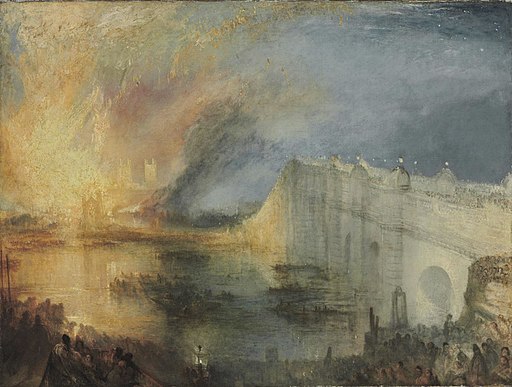BBC4 - Turner's Thames
For all those who missed it last night, you can catch up with Turner's Thames on iPlayer - I watched it and recommend it
In this documentary, art critic Matthew Collings explores how Turner makes light the vehicle of feeling in his work, and how he found inspiration in the waters of the river Thames.It's not going to be repeated and is only available until
The programme is part of the series of BBC programmes about London and the River Thames - and now forms part of the London Collection Archive - A collection of BBC programmes celebrating the people, places and spaces of London.
In this documentary, the presenter and art critic Matthew Collings explores how Turner, the artist of light, makes light the vehicle of feeling in his work, and how he found inspiration for that feeling in the waters of the River Thames. JMW Turner is the most famous of English landscape painters. Throughout a lifetime of travel, he returned time and again to paint and draw scenes of the Thames, the lifeblood of London. This documentary reveals the Thames in all its diverse glory, from its beauty in west London, to its heartland in the City of London and its former docks, out to the vast emptiness and drama of the Thames estuary near Margate.Interesting aspects of the programme included:
Turner was among the first to pioneer painting directly from nature, turning a boat into a floating studio from which he sketched the Thames. The river and his unique relationship with it had a powerful impact upon his use of materials, as he sought to find an equivalent in paint for the visual surprise and delight he found in the reality of its waters.
By pursuing this ever-changing tale of light, Turner also documented and reflected upon key moments in British history in the early 19th century; the Napoleonic wars, social unrest and the onset of the industrial revolution. His paintings of the river Thames communicate the fears and exultations of the time. Turner's greatness as a painter is often attributed to his modern use of colour. Many of his paintings are loved by the British public and regularly celebrated as the nation's greatest art. This film reveals for the first time on television a key inspiration for that modernity and celebrity; a stretch of water of immense importance to the nation in the early 19th century but which today is often taken for granted - the River Thames.
- Turner lived near to the River Thames or its estuary most of his life - when not off on his travels and the river featured in a lot of his paintings (Tomorrow I'm going to look at the places Turner lived along the River Thames and its estuary - and highlight some of his paintings)
- He returned to the Thames again and again in terms of paintings he created - at a time when London was the most important trading capital city in the world and the Thames was a very important way in which goods were moved
- His methods of notating what he saw, creating a visual framework and language for finding a way to paint the light - and how it varied when seen with water
- His habit of creating a lot of fast sketches of what he saw and then creating watercolour studies while the subject was still fresh - and then the oil paintings back in the studio
- His use of contrast to make a painting more beautiful and the depth of field more effective
- His system for structuring colour and the scope to link colour to human emotion
- His habit of dissolving the landscape in atmospheric swathes of light - his view was that the sun is God
 |
| The Burning of the Houses of Parliament Joseph Mallord William Turner - 1834 watercolour, 23 x 32 cm Collectiom: British Museum |
 |
| The Burning of the Houses of Lords and Commons, 16th October, 1834 J. M. W. Turner [Public domain], via Wikimedia Commons |












